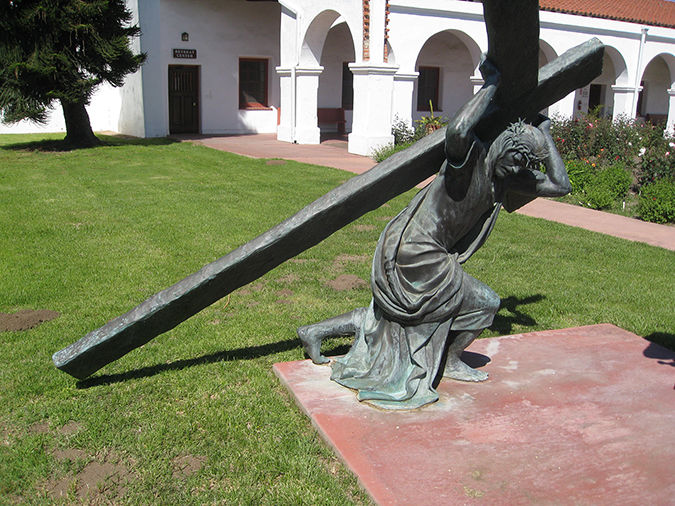Even if we are too proud to admit it, all of us are in need of healing. Looking back at our personal stories, we often struggle with the memories of difficult experiences and the wounds of past hurts.
Unfortunately, one of the most common ways of dealing with the reality of our brokenness is trying to forget or even deny it. How tempting would it be to say, “It never happened,” or, “You imagined it.”
I am reminded of the conversation between Pilate and Jesus in Mikhail Bulgakov’s novel, “The Master and Margarita,” where the procurator — recalling Calvary — says to Christ, “What a vulgar execution! But tell me, please tell me ... it never happened! I beg you, tell me, it never happened.”
The response of Bulgakov’s Messiah is dangerously appealing, “Of course, it never happened ... You imagined it” (Epilogue).
Our faith tells us otherwise. As the theologian Aidan Nichols writes, the Cross is not “a bloodless myth.” We have not imagined it. On the contrary, it did happen in all its bloody vulgarity. Certainly, reducing the Lord’s passion, death and resurrection to the ghastly details of the Roman crucifixion would be a gross misunderstanding of the Paschal Mystery which, at the deepest level, is about God’s infinite love for all of us.
Nonetheless, the climax of such love has been manifested on the Cross, which was anything but peaceful and serene. Pausing a while and reflecting on this truth, we would surely find it surprising, strange and perhaps even shocking.
The Savior did not shy away from the appalling spectacle of a cruel execution. In fact, he embraced it as a means of revealing the glory of divine love. That is why St. Alphonsus Liguori goes as far as to call Jesus’s love “insane” (“The Practice of the Love of Jesus Christ”).
What about us? Are we able to see the insanity of God’s love, or do we take it for granted? Are we willing to embrace our crosses, or do we shy away from them?
Lent is a time of recovering our sight and perceiving the absolute “madness” of divine love, to borrow another phrase from St. Alphonsus Liguori. It is a time of taking up our crosses and following the Redeemer (Mark 8:34; Matthew 16:24; Luke 9:23).
Clearly, Jesus invites us to take up our crosses, not to ignore or discard them. If we heed his invitation, our via crucis, our small share in the sacrifice of Christ, will become our way of sanctification.
We all carry some crosses. Often, they include embarrassment and shame. A mother who faithfully visits her son in prison, a recovering alcoholic whose wife divorced him and a dying AIDS patient estranged from his family are just a few examples of crucified lives that I have encountered in my ministry. Undeniably, God did not wish such tragedies and I would never attempt to provide an explanation for them. They were, however, permitted for a reason.
The mother grew in love and compassion for her troubled child. The recovering alcoholic got involved in the AA movement and became a sponsor for other addicts. The dying AIDS patient reconciled with his parents and returned to his faith which he had not practiced for years.
Without trying to forget or deny their pain, these individuals did not merely tolerate their crosses but actually embraced them. As insane and mad as it sounds, if we strive to do the same and welcome our crosses, they will cease to be our woes. Instead of restricting our freedom and paralyzing our being, the costly grace of “completing what is lacking in Christ’s afflictions” (Col 1:24) will propel us toward the fullness of risen life.
“In the end,” remarks the novelist Fyodor Dostoevsky (in “Demons”), “it has always been that the most disgraceful cross becomes a great glory and a great power if the humility of the deed is sincere.”
Oblate of St. Joseph Father Mariusz Beczek is an assistant professor of moral theology at St. John’s Seminary, Camarillo. This is the fourth article in a Lenten series.

